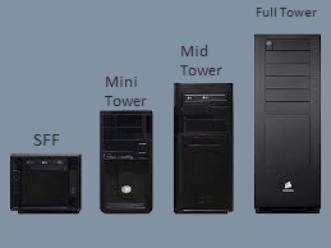


© Estwald ISI 2015 - 2025


Estwald’s
Information System Infrastructures

Encasements
Unlike motherboard form factors, there are no standardized
specifications for computer cases. They come in a plethora of sizes, shapes
and colors in order to accommodate most any taste from a conservative
business setting to the bedroom of a teen addicted to gaming.
From an engineering standpoint the case must perform two tasks. First,
it must be capable of holding all the system components needed now and in
the foreseeable future for a case is reusable from one computer generation to
the next. Second, the case must be capable of venting the heat generated by
the system. Heat is the single greatest contributor to component failure. The
materials used to make passive components such as capacitors, inductors,
and resistors dry out; and active components like APUs, CPU, voltage
regulators, and memory chips are subject to thermal runaway, a condition in
integrated circuits where boundary layers break down and excessive current flow causes damage.
The four basic encasement sizes are SFF, Mini-Tower, Mid-Tower, and Full Tower. The table below provides the basic
component handling capabilities of each case type. Other considerations are the gauge of the metal parts, the quality of the
plastic parts, noise absorbing materials if any (fan noise), and air flow through the case.
SFF
Mini Tower
Mid Tower
Full Tower
Motherboards
Mini-ITX
Mini-ITX
Mini-ITX
Mini-ITX
Micro-ATX
Micro-ATX
Micro-ATX
ATX
ATX
EATX
5.25" Drive Bays
1
1 to 2
2 to 5
3 to 6
3.5" Drive Bays
1 to 3
4 to 6
6 To 8
6 to 13
2.5" Drive Bays
0 to 4
0 to 4
0 to 10
0 to 11
Expansion Slots
1
2 to 4
7 to 8
7 to 10
Graphics Cards
1
1 to 2
2 to 3
3 to 4
Case Fans
1 to 3
2 to 4
3 to 9
5 to 10
















